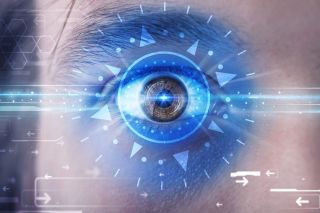ADHD
Exploring Tech-Based Symptom Tracking for ADHD
Exciting new developments could help track symptom severity.
Updated June 16, 2023 Reviewed by Jessica Schrader
Key points
- Technology-based apps may be the future of ADHD diagnosis and treatment.
- A number of these apps are in development or released.
- Google, Apple, Meta, and other tech companies also have data based on how we interact with the web.
In our last post1, we made the case for adding measurement-based care to ADHD management (not just diagnosis) and offered a free no-tech, self-administered rating scale (the HII-5) to help fill this need. Before moving on, we’d like to emphasize a few points.
A tool intended to be used repeatedly over the course of treatment to monitor progress has distinct requirements compared to a tool used once for diagnosis. An optimal treatment tracking measure or tool should:
- Be quick and easy. A tracking measure doesn’t need to be as detailed as a diagnostic measure. It’s unnecessary to take a full inventory of ADHD symptoms or assure that all DSM criteria are met. In fact, that is counterproductive given the next two requirements.
- Cover a short recent interval. It is neither necessary nor useful to address symptoms over a lifetime or over the interval required to make a diagnosis. The purpose of a tracking measure is to ascertain symptoms recently, i.e., since the last visit or treatment change was made. Getting information about symptoms that occurred months or even weeks in the past is irrelevant, as well as less reliable.
- Be rapid, easy to use, and cheap (ideally free). Because it has to be repeated often, any measure that takes more than a minute or so to complete, more than a few seconds to review, requires specialized technology, or adds costs for either the patient or the clinician (and is not covered by an insurance payor) is unlikely to be widely accepted.
The HII-5 is an “old-school” solution to this problem—but technology is poised to take over this function throughout mental health as well as more specifically for ADHD. That’s the topic for today’s post.
Active Technology-Based Approaches to ADHD Symptom Tracking
A number of medical technology companies are developing or already marketing products that can be used for tracking ADHD treatment progress.
Digital Treatment Apps: More than one company is developing a video game that is supposed to help ameliorate the symptoms of ADHD. The furthest along of these is Akili, whose video game, Endeavor Rx, has been FDA-approved for treating ADHD in children. Included in Akili’s suite of services is ADHD Insight, a symptom-tracking survey measure that parents fill out about their children’s behavior while regularly using the game.
Continuous Performance Tests (CPT): These are psychometric tests, such as the Test of Variables of Attention (T.O.V.A)., Conner’s Continuous Performance Test (CPT-3), or QB Test/Check2, developed and validated for ADHD diagnosis. The basic principle of a continuous performance test is easy to understand: These tests measure a person’s ability to perform a boring task repetitively for over 10 minutes. The task is designed to require sustained attention, but little other cognitive effort or creativity—so how a person performs on the test reflects their ability to sit still and pay attention while repetitively doing something that barely engages their mind. A Continuous Performance Test can be repeated during a patient’s treatment course to assess how they have responded to ADHD treatment, but there are practical limitations to using them this way. For starters, each test in their current form takes 14-20 minutes to administer. In addition, aside from the QB (which already has a remote-use version), most of these tests require the patient to come into a clinic, plus staffing for test setup and supervision, and they can be costly. That said, one can imagine modified versions optimized for symptom tracking that have been shortened and/or moved to a phone app.
EEG-Based: The “Neuropsychiatric EEG-Based Assessment Aid” or “NEBA System” is a small device FDA-approved as a physical test (biomarker) to assist with ADHD diagnosis in children and adolescents between the ages of 6-17. It has not been approved in adults, nor has it been FDA-approved to help monitor ADHD treatment response—but it’s plausible that it might be useful for this. That said, as with Continuous Performance Tests, each NEBA test takes 15-20 minutes to administer, significantly limiting its potential usefulness as a symptom-tracking measure.
Eye-Tracking: It is possible that eye-tracking (i.e., the synchronized movement of both eyes while following a moving target in the visual field) might serve as another biomarker for ADHD. One company pursuing this direction is Neurosync3, which has a device already on the market with FDA approval for monitoring recovery from traumatic brain injury. An advantage of Neurosync’s approach for symptom response tracking is that it is rapid—depending on the type of eye-tracking test needed for ADHD, it may take only a minute or less to administer.

Virtual-Reality/Augmented-Reality Headsets (VR/AR): Several startup companies are developing VR or AR programs for use in the ADHD arena. In general, these are designed to measure a person’s ability to pay attention and not be distracted by competing stimuli. To our knowledge, no such devices have yet been FDA approved either for ADHD diagnosis or for treatment monitoring, but it’s plausible this could come in the future.
Functional Near Infrared Spectroscopy (fNIRS): Soterix Medical is marketing a device about the size of a headband that ascertains brain activity through the skull using lasers. This is so cool we’re going to repeat it: fNIRS shines low-intensity laser beams through the scalp and skull and measures light reflected from the cerebral cortex to detect levels of oxygenated blood, thereby deriving information about regional brain activity. While still investigational (not FDA-approved) in the U.S., fNIRS is already being used in South Korea and some other parts of Asia to assist in diagnosing major depression and some other neuropsychiatric conditions. We include it here just to make the point that technology—including some tech that seems to come straight off the set of Star Trek—could transform mental health care, including ADHD, in the not-so-distant future. How this will play out is uncertain, but it’s certainly exciting.
All of the above are what we refer to as “active technology-based approaches." By this, we mean that these tests require the active participation of the patient, including interaction with specialized technology, often while being supervised in an office setting. Reviewing the criteria we listed above for an optimal treatment tracking measure or test, it is apparent that several of these technologies don’t fit the bill—either because they require too much time, are too cumbersome or inconvenient for either the patient or the provider, or are too costly and not covered by insurance payors.
Passive Technology-Based Approaches
Is there technology that could be used cheaply, quickly, and “passively” between office visits to track how an ADHD patient is responding to treatment?
Eye Movement While Reading: A startup in this space, iFocus4 uses a web-based tool to track how a patient's eyes move while reading text on their own personal computer. It turns out that eye movements while reading do change with effective medication management for ADHD, and this can be easily measured. Advantages to this approach include that each iFocus test can be accomplished at home in a few minutes and requires no specialized equipment. It’s practical for patients to do this on their own between visits and share the results with their clinician electronically. At least for now, iFocus is offering their service for free; if interested, you can discuss it as an option with your doctor.
Phone-Tracking: A startup called Ellipsis Health uses AI to detect signs of depression and anxiety in phone users’ speech patterns. Another startup, Behavidence, led by a former Meta executive, keeps tabs on mental health by tracking users’ digital behavior more broadly over their smartphones. The same technology could be adapted to detect speech and behavioral patterns indicative of ADHD. With regard to such digital apps, it will ultimately be up to patients to decide what they find more intrusive or disturbing: filling out symptom rating scales like the PHQ-9, GAD-7, or HII-5 at each doctor’s visit, or consenting to have AI monitor and analyze their speech and phone usage patterns and report results back to their doctor.
Google, Apple, Meta, and Other Big Tech Firms Already Know How You Are Doing
Which brings us to this: in case you somehow missed the memo, Google, Apple, Meta (Facebook), Amazon, internet service providers, and other corporate aggregators of digital data already have all the information they need to detect your mental health status in real time. Unless you’ve completely taken yourself off the grid (which is clearly not the case since you’re reading this post), these big corporations know—or can know—whether you’re currently struggling with depression, mood elevation, irritability, anxiety, impulsivity, or distractibility. How this type of personal mental health information is to be collected, analyzed, shared, and used—whether for good or ill—is beyond the scope of this post. But it is a critical issue we must grapple with as a society.
References
2. Disclosure: Both Ben & Sarah Cheyette have served on the ADHD Expert Consortium, a council of ADHD expert clinicians sponsored by QB Tech, that has endorsed measurement-based care for ADHD
3. Disclosure: Both Ben & Sarah Cheyette are involved in unreimbursed/unpaid clinical research to test the potential utility of Neurosync’s “EyeSync” (eye-tracking) device in ADHD
4. Disclosure: Ben & Sarah Cheyette are expert advisors and own shares in iFocus




